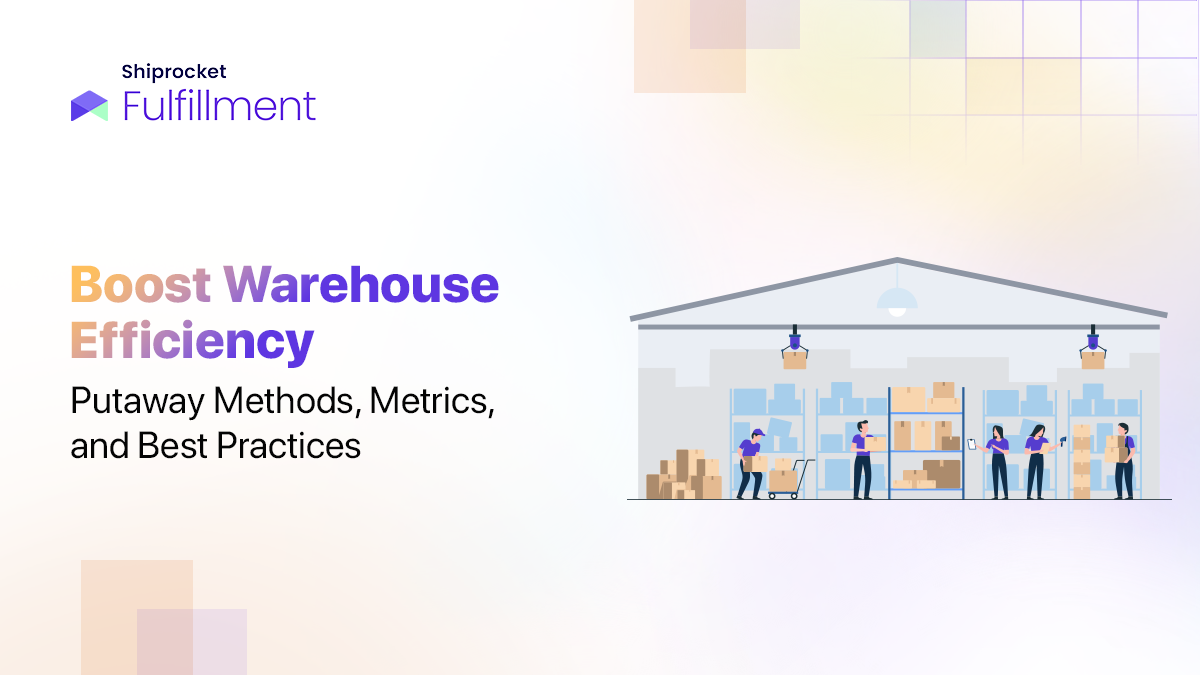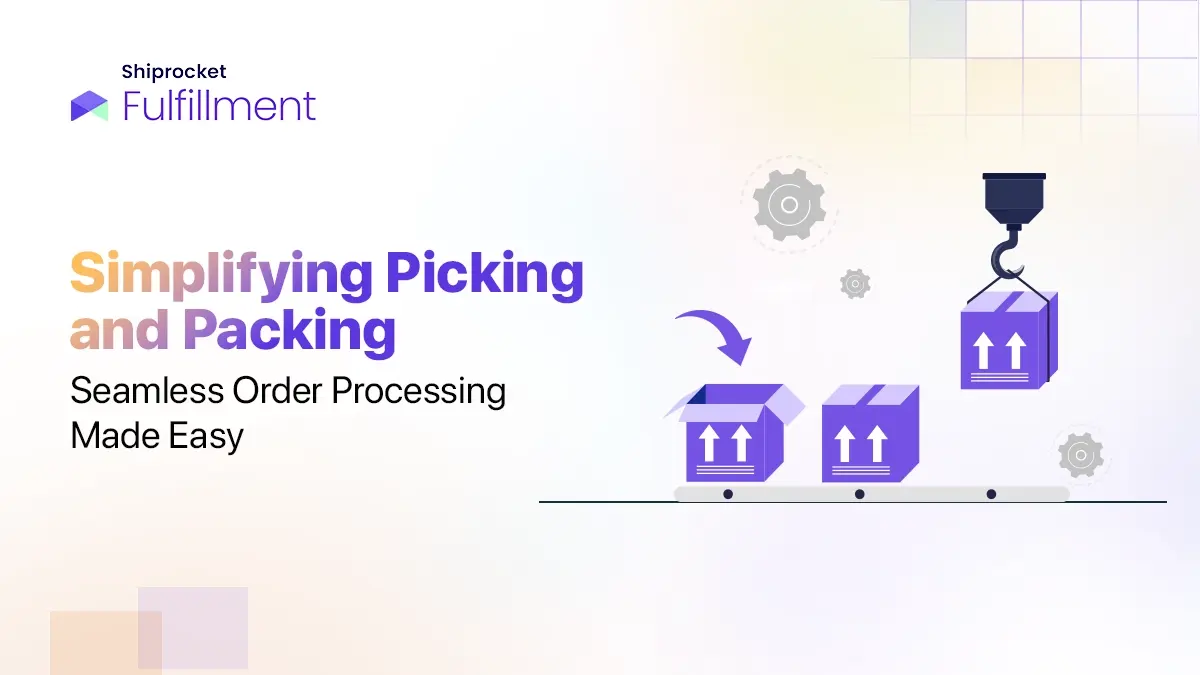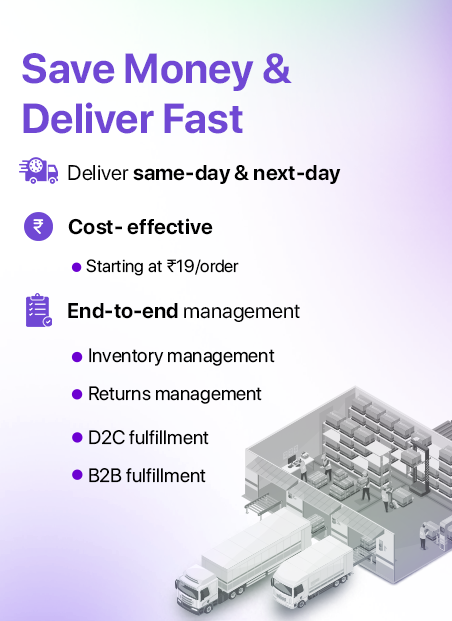- Introduction
- Understanding Supply Chain Agility
- Why Being Agile in Your Supply Chain Matters for eCommerce
- What a Functional Agile Supply Chain Looks Like: 5 Important Aspects
- 6 Tips for Making Your Supply Chain More Agile
- Adapting Your Supply Chain after COVID-19
- How to Leverage Shiprocket’s Supply Chain Agility for Your eCommerce
- Conclusion
- Frequently Asked Questions(FAQs)
Introduction
Supply chains involve the movement of goods, commodities, and services. These activities are managed using techniques to reduce costs and enhance operational efficiency on the supply side of an organisation. This is the overall concept of supply chains. They are extremely complex and generally demand the finest AI tools for depiction and prediction for real-time forecasts.
Today, most organisations use digital supply chain management systems powered by machine learning and artificial intelligence, which give enterprises unparalleled agility and resilience to improve their visibility. Let’s take a closer look at what exactly supply chain agility is and how it plays a crucial role in making sure your customers get their online orders right on time.

Understanding Supply Chain Agility
The reaction of a supply chain to any changes, delays, and other unexpected events must be quick and easily adaptable to meet client expectations. The strategies behind building such a supply chain system refer to supply chain agility. The practices and processes involved play a vital role in determining the flexibility and versatility of your supply chain management system.
The ability of an eCommerce supply chain to quickly and efficiently react to changes allies its ability to anticipate, recover and rally, and resist dynamic, disruptive events that shake stability.
Supply chain agility is more than just about keeping up with day-to-day operations and processes to meet the necessary KPIs of the organisation. It involves the prompting of internal changes within the processes itself. It includes the adaptation of new technology, management agreements, etc. However, the ultimate goal of supply chain agility is to create a fluid system that effortlessly navigates through changes and provides the best alternatives to ensure no delay in manufacturing processes.
Any enterprise must have specific resources to build an agile supply chain. They must be capable of:
- Enhancing and refining their logistic processes and management efficiently.
- Adapting automation and digitisation for all processes possible to minimise human error.
- Accessing real-time data to better use AI technology to achieve supply chain agility.
Why Being Agile in Your Supply Chain Matters for eCommerce
The ultimate goal for any business is to keep its clientele satisfied while ensuring its financial security, irrespective of the situation. A dexterous model for the supply chain is important across all industries and tends to be unique for every organisation.
The following will help you understand why supply chain agility is important:
- Meeting dynamic market demands
Supply chain agility allows you to constantly meet your customer’s requirements with affordable costs and unexpected fluctuations. Careful planning and execution are vital to meet these dynamic needs. Different methods must be adopted to ensure you can meet all expectations without delay and compromise quality. A couple of methods to ensure supply chain agility include:
- Multiple inventory units in different locations
- The adaptation of automation in your logistic operations and management
- Having multiple suppliers
- Ensuring that you have regional parcel carriers
- Well-organised and slick supply chain processes
Supply chain agility is directly related to the efficiency and speed of your supply chain. Adapting automated solutions and new technology can help you minimise process-relevant errors and time delays, streamlining your workflows in the long run. Automation and use of AI largely boost productivity and create a smarter and leaner production environment that is pivotal for organisations that intend to stay in business.
- Minimising costs of the supply chain
Labour, warehousing, and transportation costs constitute the major costs in the supply chain. Understanding and optimising these costs can help your organisation minimise supply chain costs substantially. Additionally, order fulfillment and inventory management are other areas that can be optimised to reduce costs.
Shipping and delivery can also be looked into by trying different vendors to ensure that costs borne by the enterprise are minimum. Native sourcing of raw materials on demand is a brilliant method to reduce these costs.
- Enhanced customer satisfaction
Ultimately ensuring that your customer is satisfied is vital to keep your business going. It is vital to ensure that you have a sustainable business. Quickness, consistency, and reliability are three major key points that customers expect. These have further led to the evolution of on-demand logistic services to expand customer reach and market.
It has enabled organisations to fulfill orders across several outlets rapidly and has given rise to a whole new market. To cater to such needs, an agile supply chain is a mandate as distribution networks must be versatile, robust, and capable of sustaining this large and dynamic market.
What a Functional Agile Supply Chain Looks Like: 5 Important Aspects
Every organisation has its own unique supply chain management system. It does not follow a one-size fits all approach. The company’s vision guides its growth and gives it certain characteristics unique to the organisation.
Here are five important aspects that make an agile supply chain:
- Awareness
Forecasting industry changes to understand the state of the current market while also keeping an eye out for upcoming changes, threats, and disruptions can help you find alternative ways to grow and expand your business. The greater the awareness, the faster your ability to respond to and adapt to these changes.
- Proactive decision-making
Decisions made using real-time data create insightful and rapid operational outlets that are communicated and contextualised for all manufacturing processes. Making proactive and alert decisions refers to identifying opportunities and changes to eliminate all possible threats ahead of time. It also helps you monitor the industry and its dynamic market.
- Accessibility and availability
Changes that require immediate attention often need the right tools and information to fulfill that changes. After a trend is altered for a business, access to the right industry-relevant data through prior logs can help the analysers to make better and more informed decisions to respond to the situation.
- Dexterity and versatility
The ability to modify an ongoing process when a new and better opportunity presents itself refers to the agility and versatility of a supply chain system. These must be designed to cause almost no or minimal disruption to the business. Organisations proficient in agility and versatility are bound to sustain longer in the market.
- Swiftness
Swiftness is simply the ability and speed at which you can implement changes efficiently and smoothly. Leaving room for supply chain optimisation helps you improve the swiftness of your processes and helps you cater to your customers more efficiently.
6 Tips for Making Your Supply Chain More Agile
Listed below are six different strategies that will help you make your supply chain system more lean and agile:
- Using demand forecasting
Anticipation of market fluctuation is vital. Understanding when changes are likely to occur and how you can avoid all the hurdles that these changes will throw at you is key to ensuring on-time delivery to your customers, thereby keeping them satisfied. Using demand forecasting tools allows you to determine market patterns and trends, preparing you to face them well in advance.
- Synchronisation of scheduling and production data
Relying on spreadsheets to manage your data can cause errors and reduce the effectiveness of your supply chain system. The approach needs to be updated as it is efficient and needs more communication between the planning and scheduling teams. Connecting these two functions can help you optimise your system with real-time sales and manufacturing figures making the overall system more efficient.
- Using modern warehousing technology
As a business grows, you will require greater inventory, which might be in different warehouses. You might need to coordinate between multiple warehouses across several locations, making it tedious and difficult to handle manually. Ensuring you invest in warehouse management technology can help you take a more efficient and reliable solution, thereby optimising and streamlining your supply processes.
- Scattered inventory
Relying on one warehouse might be rather risky. Any small disturbance in the warehouse can cause your manufacturing processes to completely shut down and cause you to lose money and clients. A scattered and evenly distributed inventory in different warehouses can help avoid such instances.
- Deploying automation and use of AI
Automated techniques are less likely to give you errors and can thus minimise the risk of losses. Automated inventory alters, and processes can be linked to your resource planning system and help you make more informed decisions. It can also help you cater to dynamic markets better.
- Using real-time data
Real-time data possesses critical information that gives you better visibility into your operations, allowing you to be more proactive. Furthermore, real-time data allows you to forecast demand and calculate stock quantities while identifying your turnover rate, which keeps your finances strong.
Adapting Your Supply Chain after COVID-19
The COVID-19 pandemic has completely revolutionised the supply chain industry, and there has been a sudden draught of raw materials and components. It has led to digitisation of most possessions and automation of most workflows, thereby changing supply chain management entirely.
Even though eCommerce was on the rise before the pandemic, the pace at which it has grown over the last few years is making it difficult for most online enterprises to keep up with the sudden demand. Supply chain resilience is vital to sustain such businesses and strongly highlights the need for supply chain agility.
Ensuring that you are distributing and diversifying your carriers with different suppliers is necessary to adapt to the post-COVID-19 market.
How to Leverage Shiprocket’s Supply Chain Agility for Your eCommerce
Shiprocket Fulfillment aims to help you make your supply chain system more reliable, agile, and lean to ensure the complete growth of your organisation.
Shiprocket Fulfillment strives to provide visibility and transparency to ensure enhanced performance and operations with real-time inventory and data management for an optimised supply chain system. With Shiprocket Fulfillment, you are guaranteed a robust network that saves you both money and time to ensure the complete growth of your business.
Conclusion
In conclusion, supply chain agility is the cornerstone of your brand’s success. If done right, supply chain agility can take your brand from discovery to customer advocacy. Supply chain agility governs the entire manufacturing ability of an enterprise, and small disruptions can hold your business back. Supply chain agility is solely based on the approach the organisation takes to make the system leaner.
Frequently Asked Questions(FAQs)
An agile supply chain is built around four major strategies. These include process alignment, virtual integration, market sensitivity, and shared chain responsibility.
Resilience refers to the strategic view of the design of the supply chain network for more than a year. Agility refers to the supply chain’s ability to adapt to disruption over a shorter duration – generally less than a year.
The challenges include outdated processes and systems, lack of visibility and collaboration across the supply chain, resistance to change, insufficient data and analytics capabilities, and inadequate alignment between the supply chain and your business strategies.





